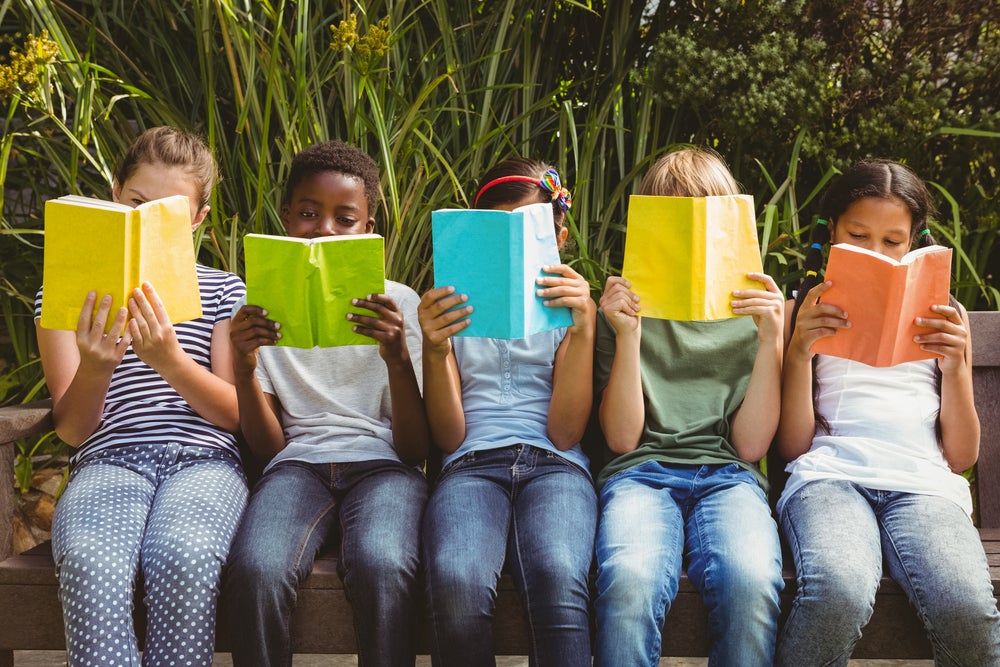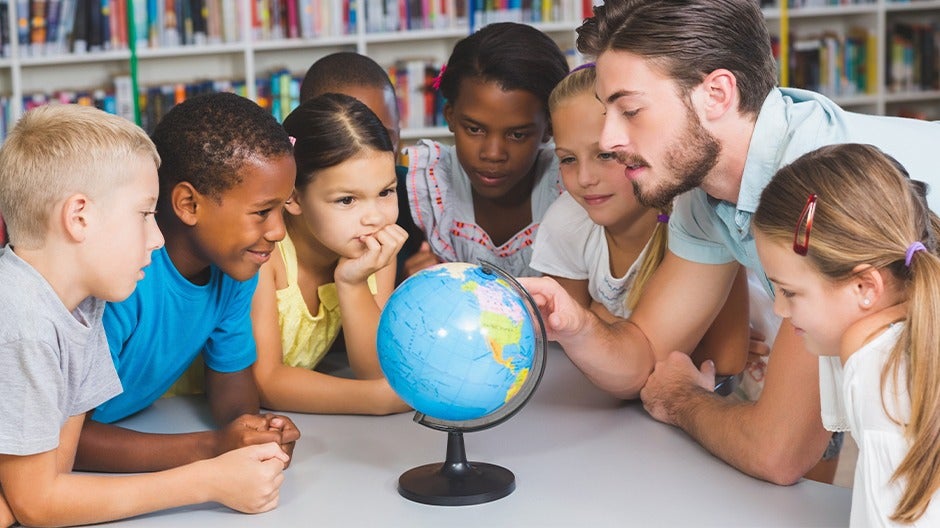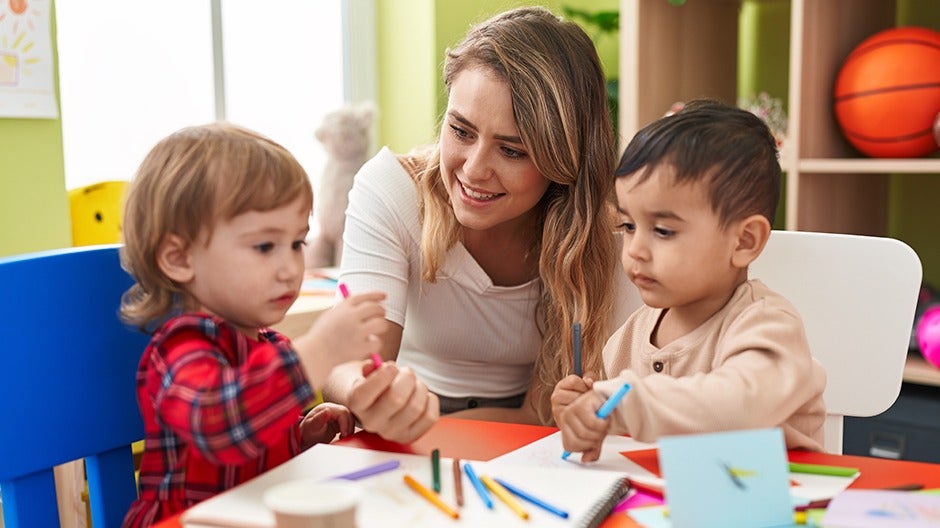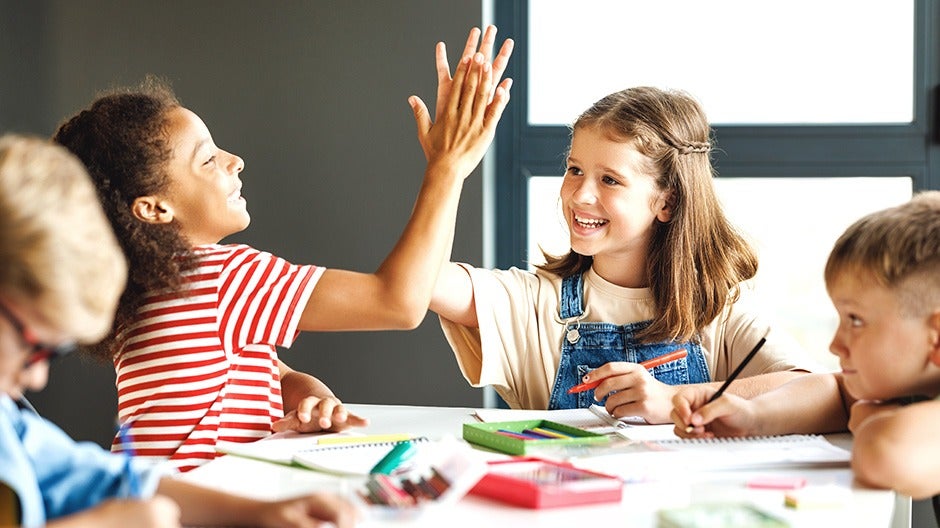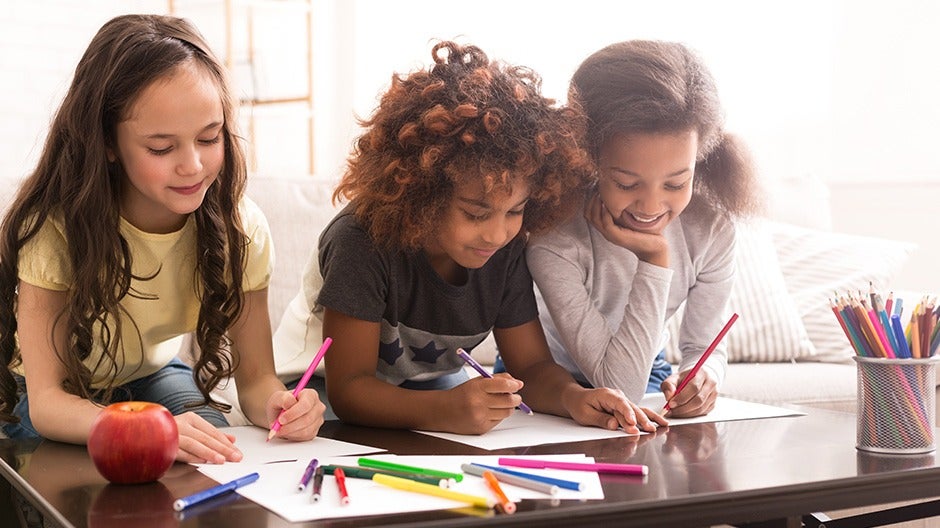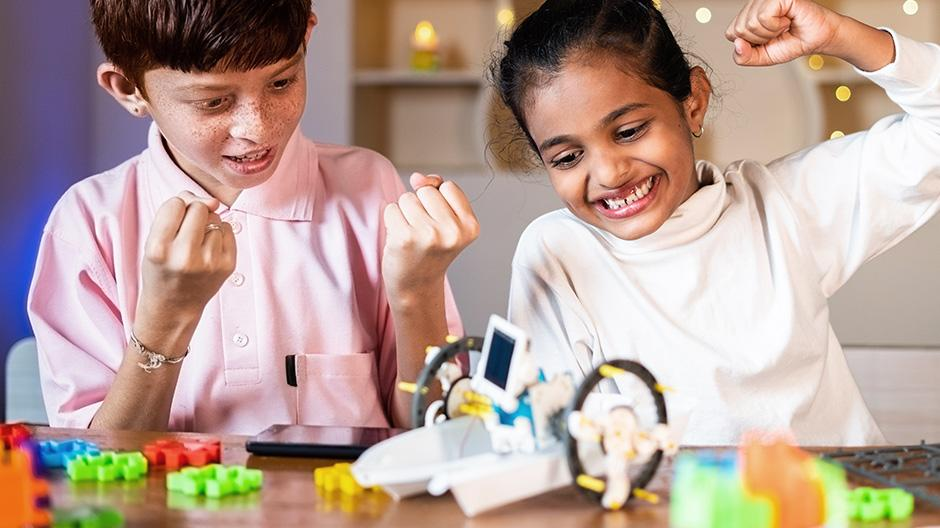What Are Reading Milestones?
Reading is a big step in your child’s early development. Being able to independently dive into books — to feel the joy of reading on their own — is important for your child’s confidence. Knowing about reading milestones can help you help them!
“Milestones” are like checkpoints that can help you keep track of where your child is in their reading journey. Milestones are not hard and fast rules about when your child should know how to do something.
Instead, milestones can help you understand the books and resources that will support your child’s learning as they move through school and grow a little older. Knowing what concepts they could be learning and interacting with can help a lot with their at-home reading!
Most reading milestones compare a child’s skills with their age. While this can be a useful tool, it’s important to remember that there’s no such thing as the “right” age for your child to master a certain skill.
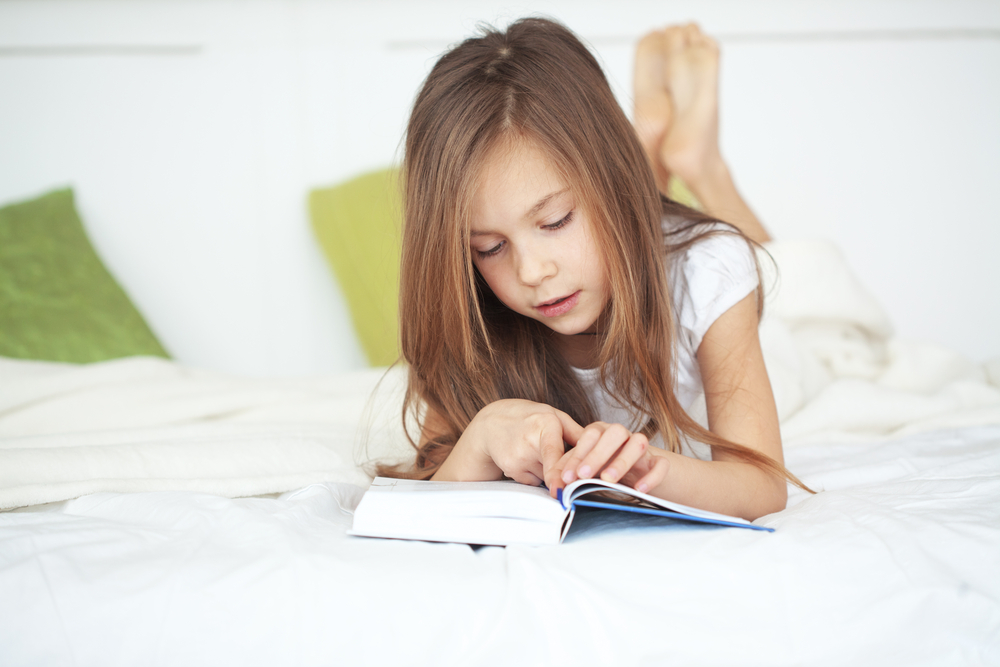
Your child will have their own unique timeline as they develop the skills that lead to fluency and then to becoming an excited and independent reader. As their interests evolve, their motivation for reading may change, too.
This journey depends on many different factors, and remember that all kids are different. Your child may reach each milestone earlier or later than other kids their age.
This is perfectly normal! We want to emphasize the importance of working on reading skills a little bit at a time and consistently (and in a fun way!), rather than focusing on checking off boxes.
With that said, here are the reading milestones (by age) to keep in mind as your little one grows older and progresses on their reading journey.
Reading Milestones By Age
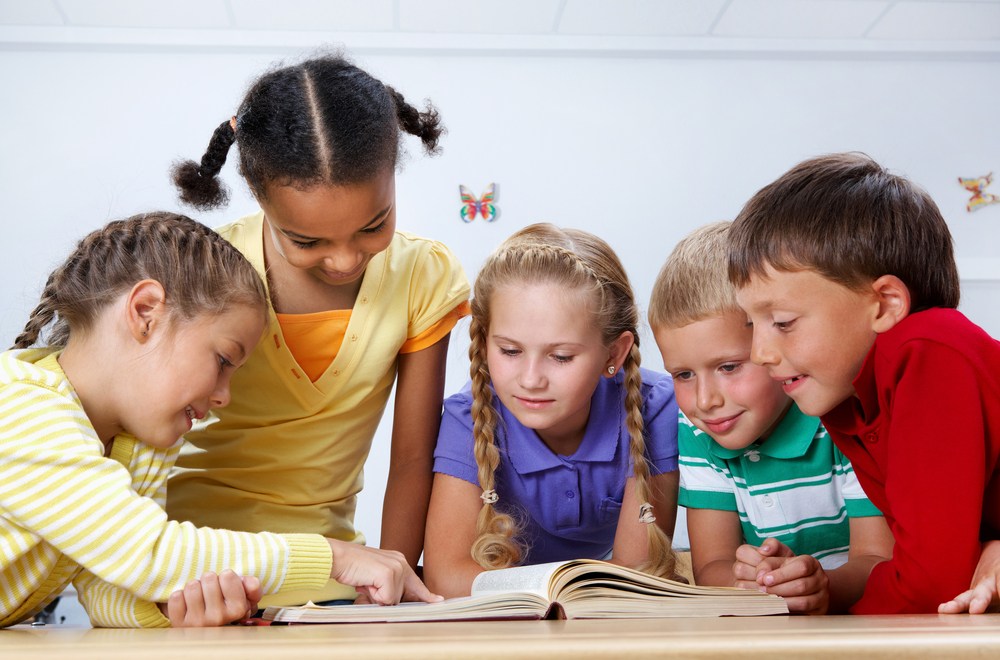
Babies (Less Than 1 Year)
Although it may not feel like it, your child starts accumulating the skills they’ll need to help them on their reading journey as early as infancy. Interactions with books and words (before they can even talk, far less read) help set the foundation they need for a love of reading later on.
Your little one might receive lots of puzzle books or soft, fuzzy books for holidays and birthdays. These are great! They help get your baby engaged with storytelling and illustrations.
When you read to your child or play with these books, they might respond by making their own special set of noises to show you that they’re paying attention, having fun, and curious about what they see.
Toddlers (Between 1 And 2 Years)
As your little one grows, the noises they made before will transform into baby babble and, soon enough, they will say their first words!
They might start to recognize the things they see by their names, too. Pictures that show up often in kids’ books — animals like puppies and zebras, or things they see in their everyday life, like candy, phones, cars, and dogs — might become part of their toddler vocabulary!
To encourage them to shout out what they know, you can point to things and ask, “What’s that?”
If your child doesn’t know the names of all these things yet, that’s OK, too! You know your child best. As long as they seem engaged, you’re on the right track.
Additionally, at this age, your child may become more involved with storytime. They might want to hold the book, for example. We recommend letting them turn the pages while you read together. Even if they don’t know the words, this helps them understand what reading feels like!
If they’re super enthusiastic, they may even treat you to a story of their own. Watch your little one mimic you by turning the pages and narrating in their own (babbling) words.
Preschoolers (3 To 4 Years)
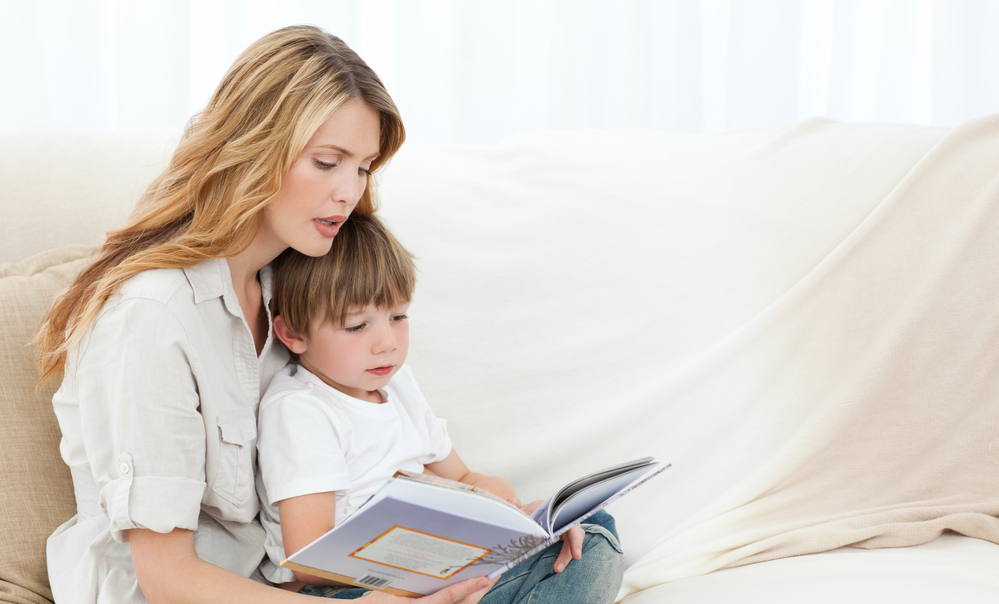
If your child is going to daycare or preschool, this is when their teacher will start to introduce the different parts of books.
Your child will discover that we read words from left to right and turn the pages from right to left. They may also learn to recognize the title, spine, and cover of a book, and the name of the main character and their buddies may come up in conversation.
To encourage this process, you can try and get them engaged by asking them about the things they read or ask them to point to the title and author.
Phonics may also become part of their daily reading routine. Phonics is basically the relationship between letters and sounds. Rhyming songs and word games are amazing ways to get your child having fun with phonics.
Expert tip: If you’re looking for help with phonics, you can visit the Begin parent resources center for tips, advice, and fun game ideas!
Part of their singing will probably include the alphabet song, too. By this age, they may be singing it all the time by heart — this is great! For even more alphabet fun, check out our HOMER app, which has several different alphabet songs.
If your child can also recognize a good handful of their alphabetic letters, then they’re making great strides in their reading journey. They may also begin to play around with scribbling, then writing random letters, and then, eventually, writing their own name.
For now, it’s not important if they are pencil-wielding wizards. As long as they’re having fun with their letters and understand that letters are used in reading, they have a wonderful start!
But remember, even if they aren’t quite there yet, it’s perfectly OK!
Kindergarteners (5 To 6 Years)
Around this age, your child’s reading milestones start becoming more grounded in breaking apart words and understanding their different components.
Your kindergartener will start to see that words can be spelled with uppercase or lowercase letters, and that they are found outside of books — they’re everywhere!
At this age, your child may also learn how to distinguish the beginning, middle, and end of words into individual phonemic sounds. Over time, they’ll even learn to group and identify words that start and end with the same sounds!
For unfamiliar words, your child will be exposed to the concept of “sounding out” or decoding words by recognizing different letter sounds and putting those sounds together.
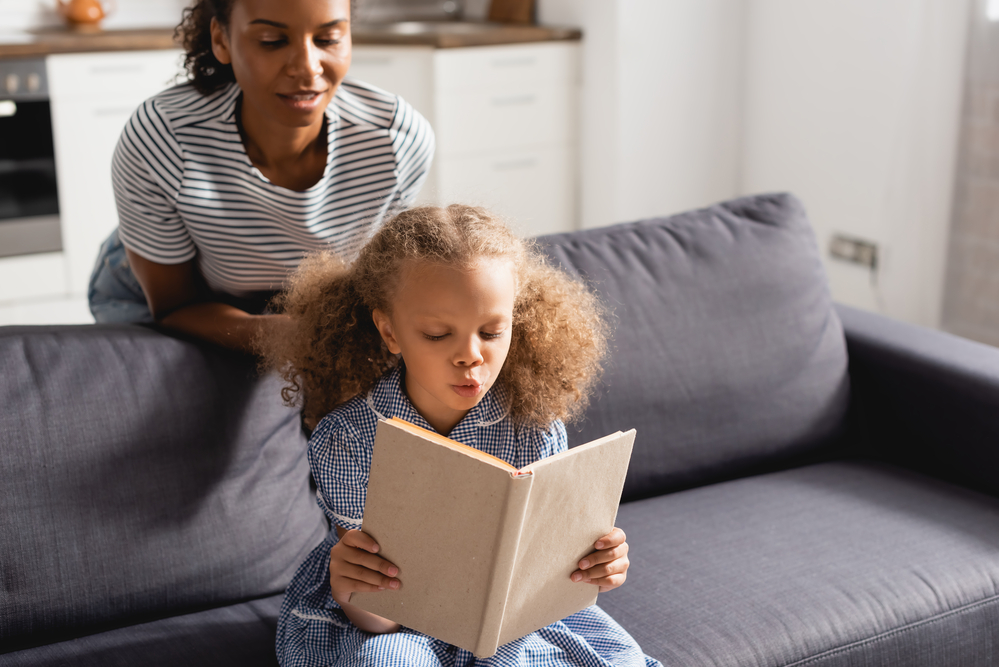
Along with learning words that are phonetically regular (meaning they sound the way they’re spelled), your child may be exposed to sight words. Not all sight words are phonetically irregular, but a lot of them are. Memorizing them is the best way for your child to learn them.
Since memorizing is an advanced learning skill, it may take some time for your child to add sight words to their vocabulary. Again, this is perfectly normal and will vary from child to child.
We recommend making sight words fun and easy by playing games, pointing out sight words in your everyday life (like on road signs, for example), and focusing on a few words at a time.
Young Elementary (6 To 7 Years)
By this age, your child’s reading confidence is really growing! Their skills are becoming more substantial, and they may begin exploring independent reading (or reading quietly beside you).
Their vocabulary and word recognition will likely grow, especially with high-frequency words that appear often in things they read — words like a, and, to, and the.
They may also begin noticing punctuation and how it affects the tone of the sentences they read. And their decoding skills will grow stronger as they practice unfamiliar words more and more.
Finally, all of the new (and old!) stories they read will help them feel confident as readers and all the more eager to read more and more!
Older Elementary (8 To 10 Years)
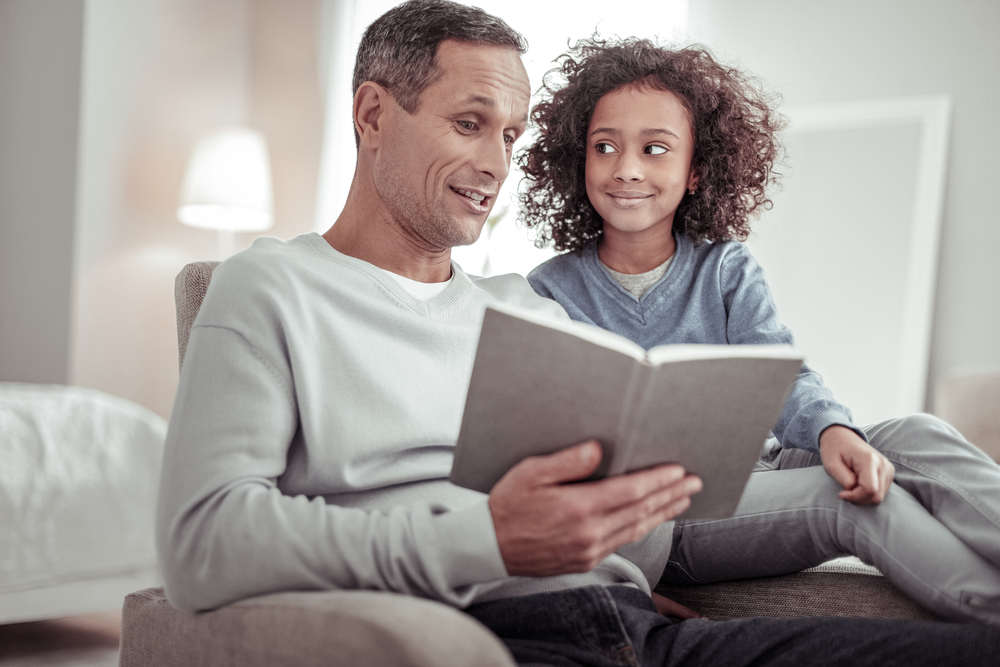
Once your child conquers the initial foundations of reading they are ready for a shift! Rather than focusing on the learning process behind reading, your child will begin to pivot for the purpose of reading to learn new things.
At this age, your nights of bedtime stories might change, but it doesn’t mean they have to end! Your child will start to seek out books that interest them. Having a good supply of these books on hand — whether purchased or from the library — can be huge for your young reader!
As your child reads more and more, they may be able to answer questions about the things they’ve read. Identifying characters and talking about the theme, setting, problem, and resolution in a story can now become part of their reading routine.
Different reasons for telling a story might also become more apparent to them. They’ll understand that some stories are made to teach, others to entertain, and others to persuade readers.
Your older elementary child may also be exposed to read-aloud sessions during which they practice taking the reins in reading the story. This is a great way for you to spend time together — sit back and listen as your confident reader shows off their achievements!
Reading Milestones As Guidelines
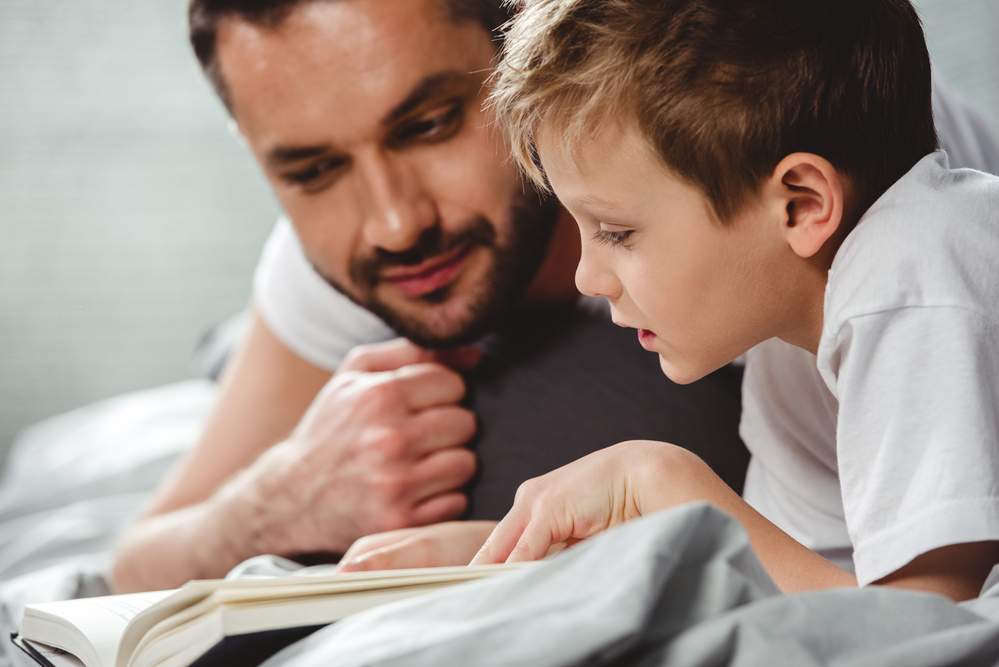
We want to reassure you that learning to read isn’t a perfect science. There are many variables involved, and all children are different!
So, of course, they’re going to learn to read at different rates. What worked for your first child or your neighbor’s kid may not work for your youngest child, and that’s OK!
We recommend using these reading milestones as guidelines, not rules. But if you ever have a question about your child’s reading progress, discuss it with your child’s teacher or consult a professional who can help you assess your child’s skills.
And if you ever need a hand keeping up your child’s reading routine, check out our fun Learn & Grow app for a personalized learning journey that boosts their confidence and grows with them!
